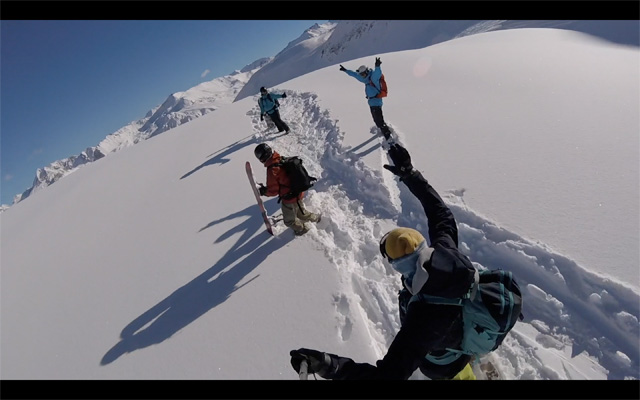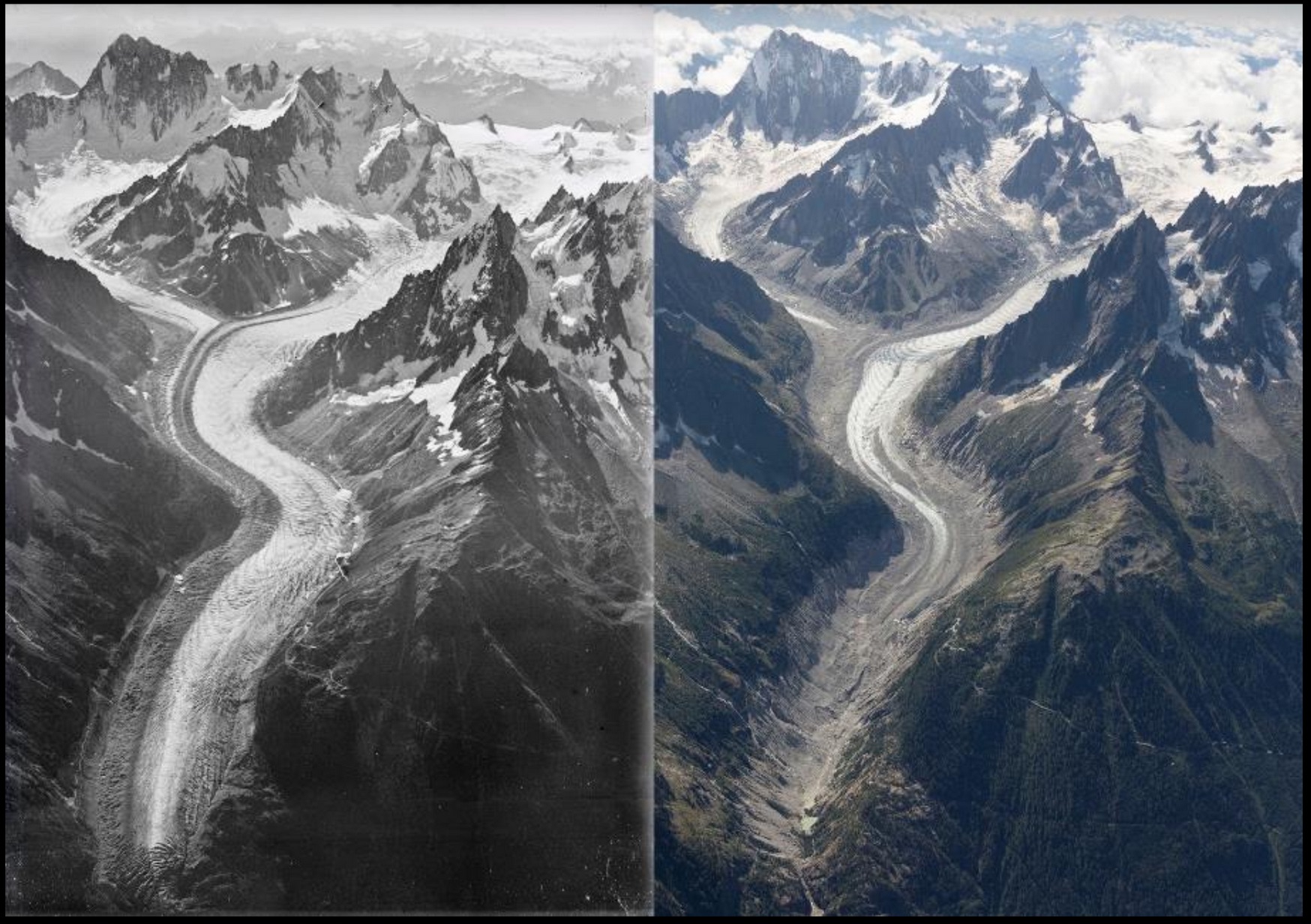
Are you seeing changes in Climate/Conditions in the high Mountains?
Recently, I had a question asking me for comments about the changes I might be seeing in the high mountains for a future article for ‘Roc and Ice’ magazine. Here’s my reply…
Q – As a guide – could you tell me about the changes you’ve been seeing, which routes can’t be skied/snowboarded anymore, are too dangerous, etc, are you worried about this, is it getting too dangerous?

A – The higher altitudes in the Alps, and elsewhere in the world, saw the ‘dreaded 2 degrees of warming’ become the norm many seasons ago.
When I started guiding Mont Blanc in the summer 20 years ago I never reached the summit without duvet jackets, duvet mitts, goggles, balaclava, the full Arctic outerwear. In recent years I’ve reached the summit in base layers and occasionally even with out gloves. Last summer 100’s of paraglider pilots circled 1000m above the summit and made multiple landings and take offs from the peak. Have conditions changed in the high mountains?
The Trient Glacier is some 500m (or more) shorter than when I first rode down it, and abseiled off the end of it using an ice screw, with a snowboard group. Today I can make the same descent with out riding on glacial ice.
Many of the big extreme classics, the north face of the tour ronde, the gervassuti couloir, which I rode in the distant past are now a completely different prospect, rarely come into condition and steeper, more technical and have more serious consequences than even before.
As the ice melts on the steep faces it draws in towards the rock face underneath, it becomes steeper, sharp rocks appear like shark fins, wide open flat faces recede into channels and narrow couloirs, rocky cliffs and buttress’s appear, the consequences grow.
At the same time, these are the classic tick routes of the past, these are the classics that the growing number of BC extreme team want to tick and ride.
The conditions have changed, what was once a relatively straight forward classic steep descent might today be an icy nightmare with vast secondary exposures that didn’t exist before and are not mentioned in the old route descriptions. When these routes do come into condition, there is now the added ‘race to get there’, to be the first to publicize the event, I mean, if you don’t see it on instagram does it even count?
The push is on, the media is online, the number of activists are up and yet the conditions are getting worse…
Are we seeing changes… go figure?
Even in the summer, the classic introductory ridge climbs of the past are now some of the most technical and serious outings. The easy reputation of these routes, like the big classic winter descents, draw unwary visiting enthusiasts to them, but conditions have changed, the dry hot summers have melted the snow ridges, the permanent snow is gone and loose blocks fill the faces and balance precariously from the ridges.
The winter snows now fall on loose rocky slopes that once held permenant snow. These loose rocky boulders hold air between them that allows the growth of depth hoar crystals, the perfect sliding surface for avalanches as they get buried deeper and deeper into the snowpack, waiting patiently for the impatient extreme rider to drop in for the tick.
Am I worried about this?
Yes, of course I’m worried about it, but not just as it changes the mountains around me, I’m worried about the effect it is having on a global scale as this rising temperature slips downwards to the lower elevations and encompasses the globe making changes and consequences that we can’t even yet imagine.
In my opinion, from what I’ve seen, the high mountains reached tipping point over a decade ago, those that live and work in them have changed and adapted or moved on.
We play a completely different game up there today, the conditions change day by day, hour by hour, minute by minute. Good conditions are short lived and in high demand, mixed conditions are the norm and the race is on to find the last pockets of good snow, the steeps that are in the least bad condition rather than the perfection that we once craved.
On a positive note, we are so much more informed, educated and aware of this high mountain environment than ever before, we have more tools with which to make our decisions and encourage safe passage and our skill levels are at a level never seen before!
The negative consequences of this are that we can do more, go further, go steeper, go bigger, bigger even than the mountain conditions today might support and with media coverage as the judge, the competition to be out there doing the most extreme descents, drops or lines is leading and pushing the way.
Yeah! I’m a little worried, but probably not just for the mountains and the industries living from them, more for the planet and the morality of the human race…
Is that a little too deep an answer?



